Lobuche East Peak Climbing is one of the most beautiful climbing adventures in the Everest region. A combination of trekking and climbing adventures, you will get an extraordinary experience of mountain adventure.
Overview
Lobuche East Peak Climbing is one of the most beautiful climbing adventures in the Everest region. A combination of trekking and climbing adventures, you will get an extraordinarily beautiful experience of mountain adventure.
Lobuche East Peak stands 6,119 meters above sea level in the Khumbu Valley near Khumbu Glacier and Lobuche village. This spectacular mountain also attracts mountaineers to Everest and Lhotse as part of their acclimatization climb. The Lobuche East Peak Climbing adventure however is an exciting climbing trip. This trip also takes you on a Trek to the Everest Base Camp before the climb.
Other Popular Peak Climbing in Nepal
What You See During the Climb to Lobuche East Peak?
The climbing adventure to Lobuche Peak starts with a trekking adventure from Lukla along the trail to the Everest base camp. This trip is a blend of trekking to EBC and climbing Lobuche Peak. Thus, you will see all the wonderful places, mountains, and lifestyles that the trek to Everest base camp offers you.
From peaceful nature to mountain wilderness and from the Sherpa lifestyle to the magnificent Himalayas, you will come across amazing experiences during the Lobuche East peak trek. You will reach the Everest Base Camp and Kala Patthar. Trekking to Kala Patthar brings you magical views of mountains including Mt. Everest and Lhotse. The trek also offers you a view of other mountains like Ama Dablam, Pumori, Thamserku, Makalu, Cho Oyu, etc.
After trekking to the base camp, you will trek towards Lobuche East Peak ascent via Lobuche village. Camping at the Lobuche East High Camp, you will attempt the summit push of the peak. It is a day climbing adventure to the summit and back to high camp. The view you get to watch from the top of the peak is simply spellbinding.
Reasons Lobuche East Peak Climbing Becomes an Experience
Nepal Climbing Adventure always strives to offer an adventure traveling experience that you can cherish. While the Lobuche East Peak Climbing Adventure is beautiful in its essence, your experience of trekking there becomes even more beautiful with us.
By the time we take you to the base camp and bring you back, we take one step ahead to offer you a beautiful experience. We keep your safety and happiness our top priority and you will experience the same during the trip.
Trekking and climbing Lobuche East Peak with us is traveling in safe hands.
What You Can Expect During Lobuche East Peak Climbing?
Lobuche East Peak climbing is a blend of trekking and mountaineering, providing an unforgettable adventure in the Everest region. Here's what you can expect:
Trekking to Lobuche East Base Camp:
- Arrival in Kathmandu: Your journey begins with arrival in Kathmandu, where you'll prepare for the trek and enjoy sightseeing.
- Trek to Namche Bazaar: After a scenic flight to Lukla, trek through picturesque villages and suspension bridges to reach Namche Bazaar, the bustling hub of the Khumbu region.
- Acclimatization Days: Spend acclimatization days in Namche Bazaar and Dingboche, where you'll hike to taller altitudes during the day and return to lower altitudes to sleep, helping your body adapt.
- Reaching Lobuche East Base Camp: Continue trekking through the Khumbu Valley, passing through villages like Tengboche and Pheriche, before reaching the Lobuche East Peak Base Camp.
Climbing Lobuche East Peak:
- Base Camp to High Camp: From the base camp, climb to the high camp, located at approximately 5,600 meters, where you'll set up camp and prepare for the summit push.
- Summit Day: Start the summit attempt early in the morning, navigating through rock slabs, snow, and ice to reach the summit. The final ascent involves climbing steep snow slopes using fixed ropes.
- Summit Experience: Stand on the summit of Lobuche East Peak ascent, enjoying panoramic views of Everest, Lhotse, Nuptse, and other surrounding peaks. Capture the moment with photos and soak in the achievement.
- Descent: Descend carefully back to the high camp and then to the base camp, celebrating your successful climb.
How Difficult is Lobuche Peak Climb?
Climbing Lobuche East Peak is a challenging journey that requires physical fitness, mental resilience, and mountaineering skills. Here's a breakdown of the Lobuche east peak difficulty:
Physical Demands for Lobuche Base Camp Altitude:
- High Altitude: The climb reaches an altitude of 6,119 meters, posing risks of altitude sickness at Lobuche East Peak. Proper acclimatization is crucial to mitigate these risks.
- Endurance: The trek and climb involve long days of hiking and climbing, often in harsh weather conditions. Good cardiovascular fitness and stamina are essential.
- Technical Skills: The ascent includes sections of rock climbing, ice climbing, and navigating fixed ropes. Basic mountaineering skills such as using crampons, ice axes, and harnesses are necessary.
Mental Challenges for Lobuche Base Camp Altitude:
- Mental Fortitude: The climb can be mentally demanding, requiring determination and resilience to push through fatigue, cold, and altitude-related discomfort.
- Teamwork: Working as part of a team and following the guidance of experienced climbers is vital for safety and success.
Preparation and Training:
- Pre-Climb Training: Engage in regular physical training, including cardiovascular exercises, strength training, and hiking with a weighted backpack.
- Mountaineering Courses: Consider taking mountaineering courses to learn essential skills such as rope handling, ice climbing, and crevasse rescue.
Lobuche East Peak Climbing Cost for 2024 and 2025
Lobuche Peak climbing cost varies depending on the expedition provider, services included, and group size. On average, the cost ranges from $1,999 to $2,999 per person. This Lobuche Peak climbing cost typically covers:
- Permits: Climbing permits and National Park fees.
- Accommodation: Lodging in teahouses and tented camps.
- Meals: Three meals per day during the Lobuche East Peak trek and climb.
- Climbing Equipment: Shared climbing equipment such as ropes, ice axes, and crampons.
- Internal Flights: Round-trip flights between Kathmandu and Lukla.
Additional Expenses for Lobuche East Peak climbing cost:
- International Flights: Airfare to and from Nepal.
- Travel Insurance: Comprehensive insurance covering high-altitude trekking and climbing.
- Visa Fees: Nepal entry visa.
- Personal Gear: Personal trekking and climbing equipment.
- Tips: Gratuities for guides, porters, and support staff.
- Extra Services: Optional services like hot showers, Wi-Fi, and charging devices.
Best Time for Lobuche East Peak Climbing
Lobuche East Peak climbing season usually resides in the month with a clear view and less rainfall. These seasons have the optimal view of scenery and nature glorified with utmost beauty leaving the tourists mesmerized.
Spring Season (March to May)
Spring is one of the best times to climb Lobuche East Peak. The weather is relatively stable, with clear skies and moderate temperatures. The blooming rhododendrons add a splash of color to the landscape. This season also coincides with the climbing season for Everest, so the trails are well-maintained.
Autumn Season (September to November)
Autumn is another ideal season for climbing. The post-monsoon period offers clear views, stable weather, and fewer crowds compared to spring. The temperatures are cool but manageable, making it a popular time for trekking and climbing.
Winter and Monsoon Seasons
Winter (December to February) and monsoon (June to August) are generally not recommended due to harsh weather conditions. Winter brings extreme cold and heavy snowfall, while the monsoon season is characterized by heavy rains and an increased risk of avalanches and landslides.
Outline for Lobuche Peak Itinerary
Day 01: Arrival in Kathmandu (1400m)
Day 02: Sightseeing Tour in Kathmandu
Day 03: Kathmandu – Phakding (2,680m)
Day 04: Phakding – Namche Bazar (3,440m)
Day 05: Lobuche East Peak Acclimatization Day
Day 06: Namche – Tengboche (3,860m)
Day 07: Tengboche – Dingboche (4,410m) – B.L.D
Day 08: Acclimatization Day
Day 09: Dingboche – Lobuche (4,940m)
Day 10: Lobuche – Everest Base Camp (5,364m) – Gorakshep (5,164m)
Day 11: Gorak Shep – Kala Patthar (5,545m) – Lobuche (4,910m)
Day 12: Lobuche - Lobuche East High Camp (5,800m)
Day 13: Lobuche East Peak Summit (6,119m)
Day 14: Contingency Day
Day 15: High Camp - Pangboche
Day 16: Pangboche - Namche (3,440m)
Day 17: Namche - Lukla (2,860m)
Day 18: Lukla – Kathmandu (1,400m)
Day 19: Departure Day
The 19 days climbing journey to Lobuche East Peak ends here. Bid farewell to Nepal as you depart for your next adventure.
Food and Accommodation during Lobuche East Peak Climbing
1. Teahouse Accommodation:
During the trek, you will stay in teahouses that offer basic but comfortable rooms. These lodges provide essential amenities such as beds, blankets, and shared bathrooms. Some tea houses also have hot showers and charging facilities for an additional fee.
2. Tented Camps:
At higher altitudes and base camps, you will stay in tented camps. These tents are equipped with sleeping bags and mattresses to ensure a comfortable night's sleep. Meals are prepared by the expedition's kitchen staff.
3. Meals:
The teahouses and camps provide three meals a day: breakfast, lunch, and dinner. Typical meals include local dishes such as dal bhat (lentil soup with rice), momos (dumplings), and thukpa (noodle soup). Western dishes like pasta, pancakes, and omelets are also available.
4. Dietary Requirements:
Inform any dietary restrictions or preferences to our team in advance. Most teahouses and camps can accommodate vegetarian, vegan, and gluten-free diets.
What is included?
- All types of organizational requirements
- All trekking and climbing paper works and permits
- All airport and hotel transfers
- Welcome and farewell dinner
- Accommodation and meals during the whole of the expedition
- Flight from Kathmandu to Lukla and back
- Government and local taxes
- Reference notes to plan your trip
- An experienced English-speaking climbing guide, assistant climbing guide, and Sherpa porter including their salary, insurance, food, lodging, and all equipment
- A comprehensive medical kit
- Facilities of Email and satellite phones in base camp
- Necessary oxygen bottles
- Written and photo internet dispatches to send your progress to your family
What is not included?
- Nepal Visa fee (bring small denomination cash USD and two passport photographs)
- International airfare
- Excess baggage charges
- Extra night accommodation apart from the schedule due to any reasons
- Lunch and evening meals in case of early return than the scheduled itinerary
- Travel and rescue insurance
- Charges for Email and satellite phones
- Charge for extra Sherpa porter (if required)
- Personal expenses
- Tips for Climbing Guide and Sherpa
There are a number of things that you need to keep in mind if you ever plan for your vacation. Because you want to make the most out of your limited time, it is truly a hectic job for you to find a trustworthy and experienced traveling companion. With Nepal Climbing, you have your problem solved already as we are one of the leading Trekking and Mountaineering organizations in Nepal and have been providing first class service in several travelling packages across the country for many years.
We prioritize your satisfaction and safety
At Nepal Climbing Adventure, our ultimate objective is to arrange the programs for you to make the most out of your valuable time. We value your satisfaction, adventure, amusement and safety. Regardless of whether you are searching for stunning perspectives along the trekking trails in Himalayan mountain range or widely acclaimed, heavenly attractions with developed societies, our exposure and experience in travel business will help you ensure your requirements are met.
We have professional staffs and service
We trust that extraordinary staff lead awesome administration. That is the reason we are collaborated with experienced and eager individuals. We possess authorized and government certified guides who are very much furnished with broad learning of Nepali communities and traditions. They additionally have familiar English speaking abilities and hierarchical capacities to encourage all types trekking groups.
Responsible Tourism and social values
We are endeavoring to lessen the effect of tourism by guaranteeing our staff are very much aware of ecological issues. We are doing our best to create less waste as could be expected under the circumstances and make a point to reclaim non-compostable wastes. We outline our itineraries and work in the field guided by the standards of ecotourism and reasonable tourism. Moreover, all our staff have been given ecological preparing and are extremely aware to the eco-system we enter. Additionally, we are adhering to sustainable assets of energy. Our guides will share you the social values, culture and religious harmony for better understanding the groups you visit.
Customizable Service
Our promise is to provide you with the travelling packages customizable according to your demand fulfilling your budget criteria. So, we can facilitate a minimum of 2 individuals with a personalized service at a reasonable cost.
Online Payment
Or
WIRE TRANSFER
Bank Details:
Account Holder's Name: Nepal Climbing Adventure Pvt. Ltd.
Bank Name: Himalayan Bank Ltd.
Account Number: 01907449340018
Account Type: USD
Address: Thamel, Kathmandu, Nepal
SWIFT CODE: HIMANPKA
For more detail contact us:
Krishna Subedi (Chris Chhetri): +977 9851076791 (24/7, Call/Viber/Watsapp)
We recommend our guests have a valid insurance policy before undertaking an adventure in Nepal Himalaya. During treks and expeditions, the insurance should cover for expenses such as air ambulance, helicopter rescue, and medical care. As an adventure operator, we (NCA), are not permitted to arrange or sell insurance packages here in Nepal as per the Government of Nepal.
Preparation for 19 days Lobuche Peak Climbing to the East
Proper preparation is key to a successful and enjoyable climb. Here are essential steps to prepare for 19 days Lobuche peak climbing to the east:
Physical Training:
- Cardiovascular Fitness: Engage in regular cardio exercises such as running, cycling, and swimming to build endurance.
- Strength Training: Focus on building core, leg, and upper body strength through weightlifting, squats, lunges, and push-ups.
- Hiking Practice: Go on regular hikes, gradually increasing the distance and elevation, and practice hiking with a loaded backpack.
Acclimatization:
- Gradual Ascent: Plan your itinerary to include acclimatization days for Lobuche East Peak Summit Climbing, allowing your body to adjust to the altitude gradually.
- Hydration and Nutrition: Stay hydrated and maintain a balanced diet to support your body's acclimatization process.
Gear and Equipment:
- Climbing Gear: Ensure you have all necessary climbing gear needed for Lobuche East Peak, including crampons, ice axes, harnesses, helmets, and fixed ropes.
- Clothing: Pack appropriate clothing for various weather conditions, including thermal layers, waterproof jackets, gloves, and hats.
- Footwear: Invest in high-quality, comfortable mountaineering boots suitable for snow and ice conditions.
Mental Preparation:
- Mindfulness and Stress Management: Practice mindfulness techniques such as meditation and deep breathing to manage stress and stay focused.
- Positive Attitude: Maintain a positive attitude and be prepared for challenges. Mental resilience is crucial for overcoming difficulties during the climb.
Logistics and Planning:
- Permits and Documentation: Obtain all necessary permits, including the climbing permit and trekking permits for the Everest region.
- Travel Arrangements: Book flights, accommodation, and transportation in advance to ensure a smooth journey.
Guides and Porters: Hire experienced guides and porters to assist with navigation, carrying gear, and ensuring safety.
Trekking and Climbing Essentials for Lobuche East Peak Expedition
Clothing:
- Base Layers: Moisture-wicking thermal tops and bottoms.
- Insulating Layers: Fleece jackets and down jackets.
- Outer Layers: Waterproof and windproof jackets and pants.
- Headgear: Warm hat, sun hat, and balaclava.
- Gloves: Insulated and waterproof gloves.
Footwear:
- Trekking Boots: Sturdy, waterproof boots with good ankle support.
- Climbing Boots: High-altitude mountaineering boots.
- Socks: Thermal and moisture-wicking socks.
Climbing Gear:
- Harness: A comfortable climbing harness.
- Helmet: A climbing helmet for protection.
- Ice Axe: Essential for traversing ice and snow.
- Crampons: Fitted for your climbing boots for icy conditions.
- Carabiners and Ropes: For securing yourself during technical climbs.
Other Essentials for Lobuche East Peak Expedition:
- Backpack: A durable backpack with a good capacity.
- Sleeping Bag: Rated for cold temperatures.
- Trekking Poles: To assist with balance and reduce strain.
- First Aid Kit: Basic medical supplies including altitude sickness medication.
- Sunscreen and Sunglasses: To protect against UV rays.
Hydration System: Water bottles or hydration bladder.
Frequently Asked Questions (FAQ’s)
1. How hard is Lobuche East?
Lobuche East is graded as Grade PD+ (Peu Difficile Plus) on the Alpine Grading System, which means the climb is moderately difficult, requires some level of experience, and is somewhat challenging. You will need to use climbing gears and equipment to make it to the summit, traversing through the steep and icy terrains.
2. How long does it take to climb Lobuche?
It takes about 15-20 days with acclimatization days to climb Lobuche East Peak. The actual climb takes 2-3 days from basecamp to summit and returns to basecamp.
3. How technical is Lobuche East?
Compared to other climbing peaks, Lobuche East is considered a technical climbing peak in Nepal. The climb involves rough trials with rock, snow, and ice. Climbers require experience with crampons, ice axes, and rope work, as the summit push includes a steep ascent on a mixed terrain of rock and ice.
4. Which is harder, Lobuche or Island Peak?
Both Lobuche East and Island Peak present significant challenges, but Lobuche East is generally considered more technical due to its steep and mixed terrain. Island Peak, while still challenging, is often seen as slightly less technical but involves longer trekking distances. Overall, the difficulty can vary based on individual experience and conditions.
5. How long is the trek from Lobuche to Everest Base Camp?
The trek from Lobuche to Everest Base Camp is approximately 4.5 kilometers (2.8 miles) and usually takes about 2-3 hours one way. The trail follows the lateral moraine of the Khumbu Glacier and offers stunning views of the surrounding peaks.
6. When is the best time to do Lobuche Peak Climbing?
The best times to climb Lobuche Peak are during the pre-monsoon (spring) season from April to May and the post-monsoon (autumn) season from September to November. These periods offer stable weather, clear skies, and moderate temperatures, making for ideal climbing conditions.
7. What is the cost of the Lobuche East Climbing package?
The cost of the Lobuche East Climbing package can vary widely depending on the services included, such as guides, porters, accommodation, permits, and equipment rental. On average, the cost ranges from $2,000 to $4,000 per person.
8. What are the permits required for the Lobuche climb?
For climbing Lobuche East, you will need the following permits:
- Sagarmatha National Park Entry Permit: Required to enter the national park.
- Khumbu Pasang Lhamu Rural Municipality Permit: Required for trekking and climbing in the Khumbu region.
- Lobuche Peak Climbing Permit: Issued by the Nepal Mountaineering Association (NMA).
9. Will I get charging and internet facilities on the peak climbing journey?
Charging facilities and internet access are available in most teahouses along the trekking route to Lobuche, but they can be limited and often come with additional costs. As you get closer to the base camp and higher altitudes, these facilities become less available.
10. Is Everest visible from Lobuche?
Yes, Mount Everest is visible from Lobuche. The village offers spectacular views of Everest, as well as other prominent peaks like Nuptse and Pumori. The vantage points around Lobuche provide excellent photo opportunities of the world's highest mountain.
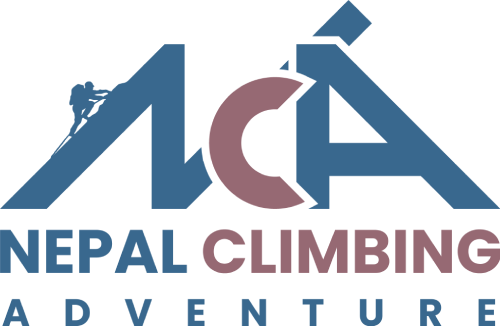
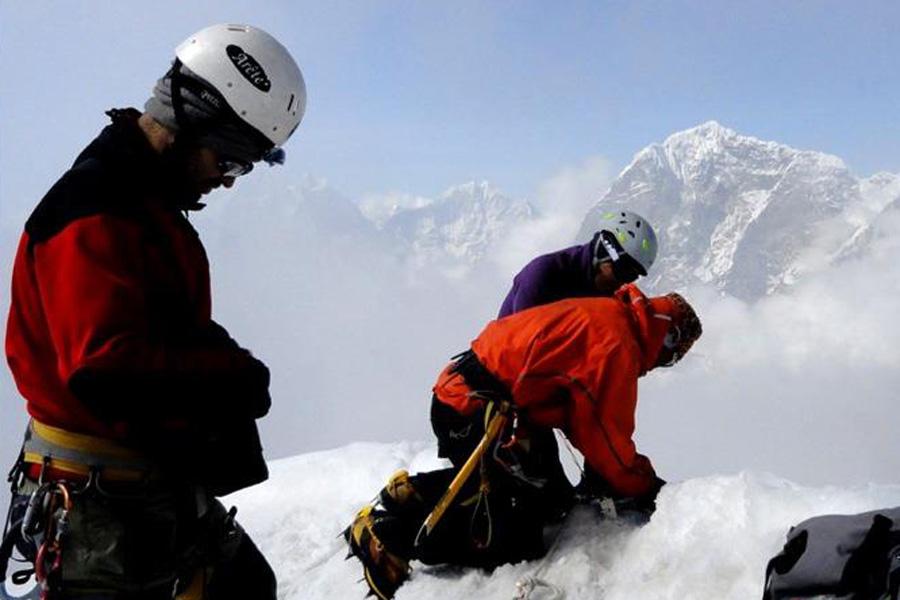

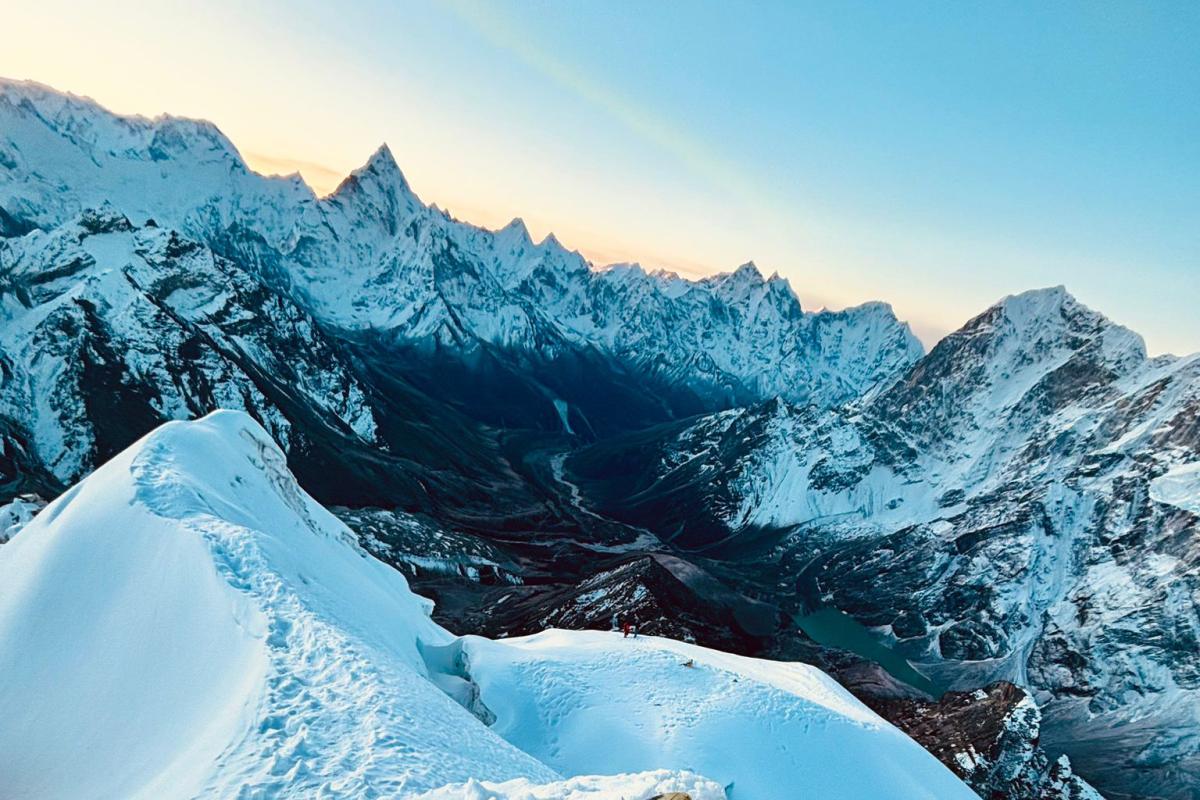

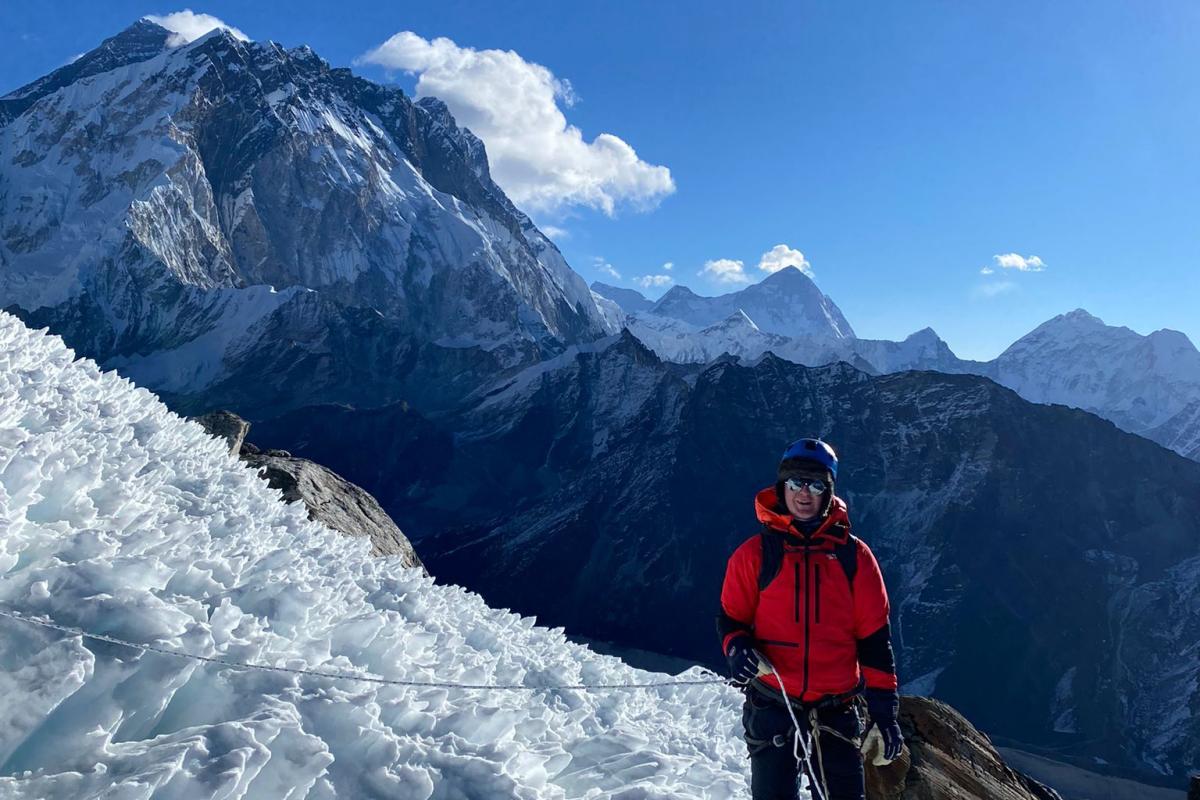
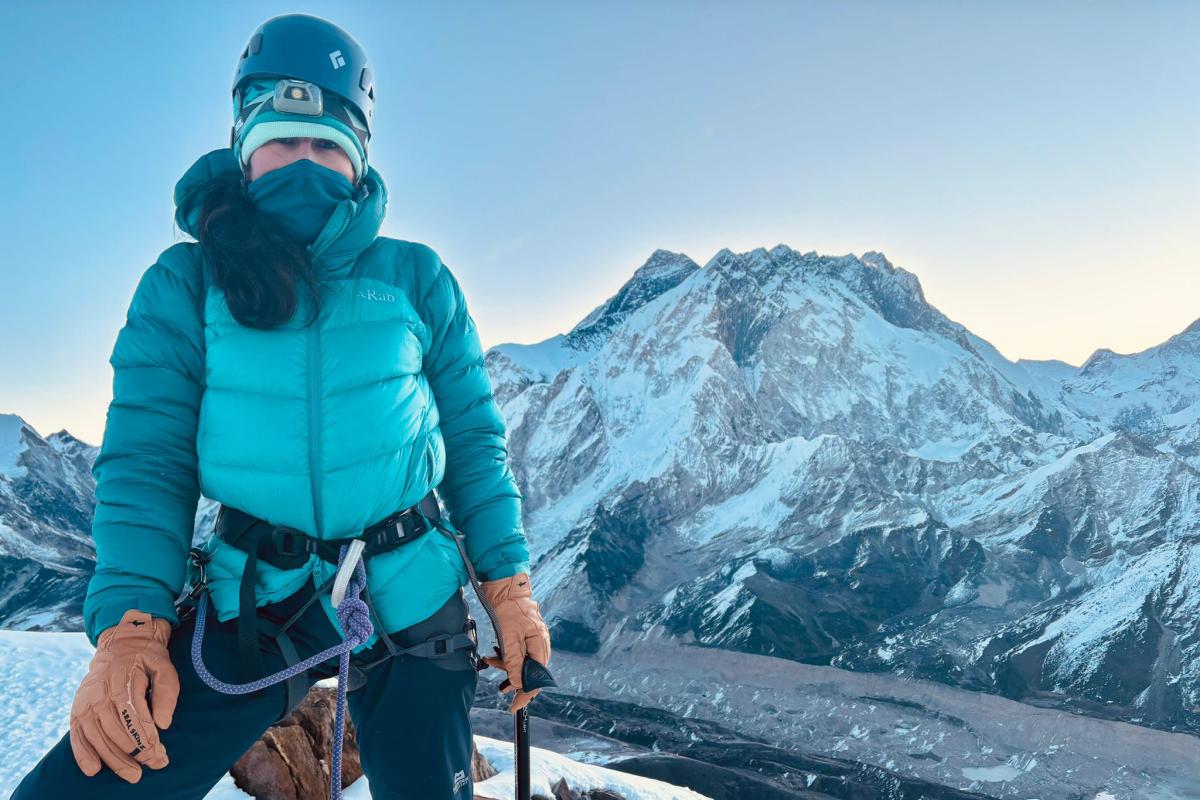
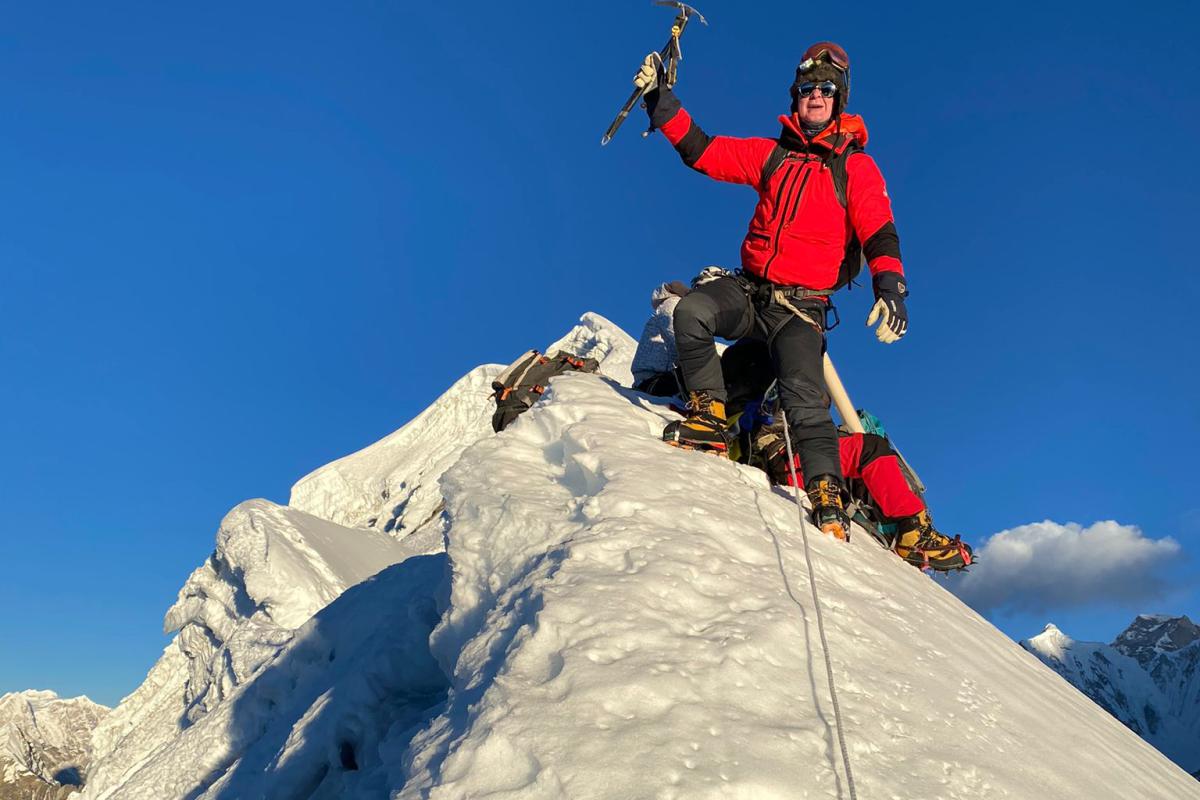
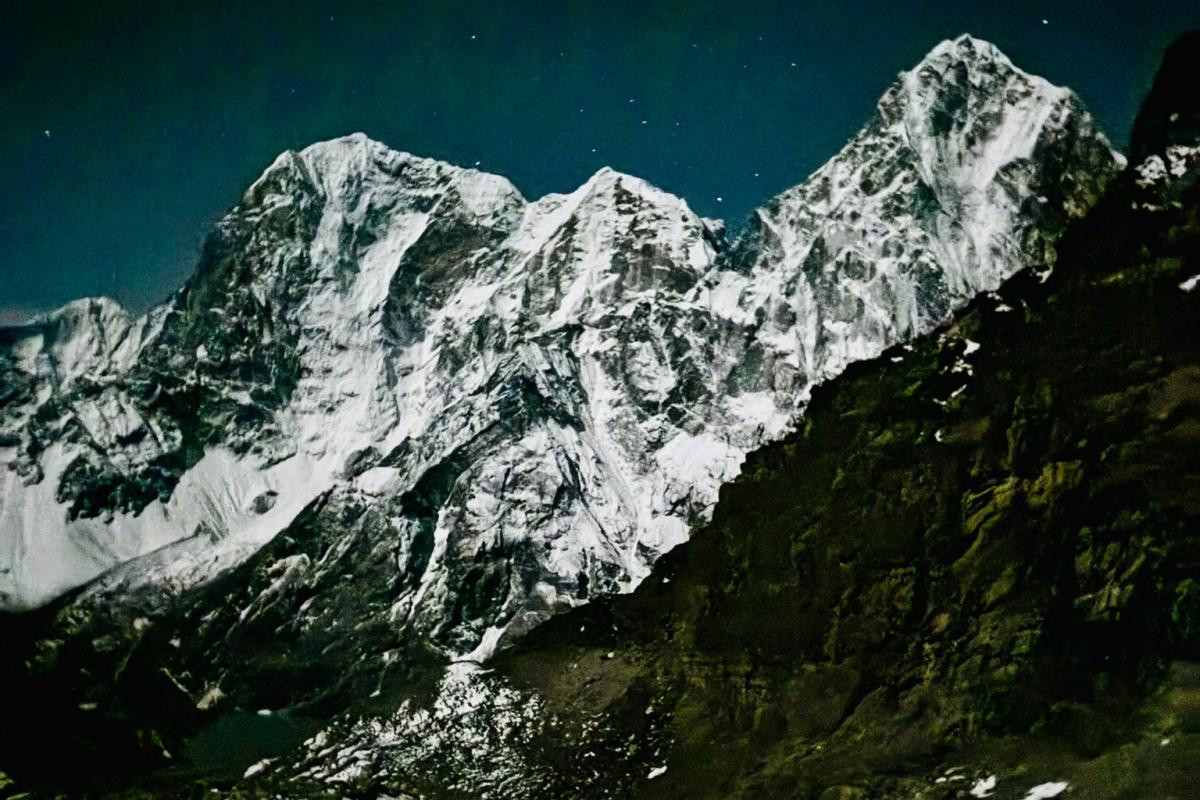
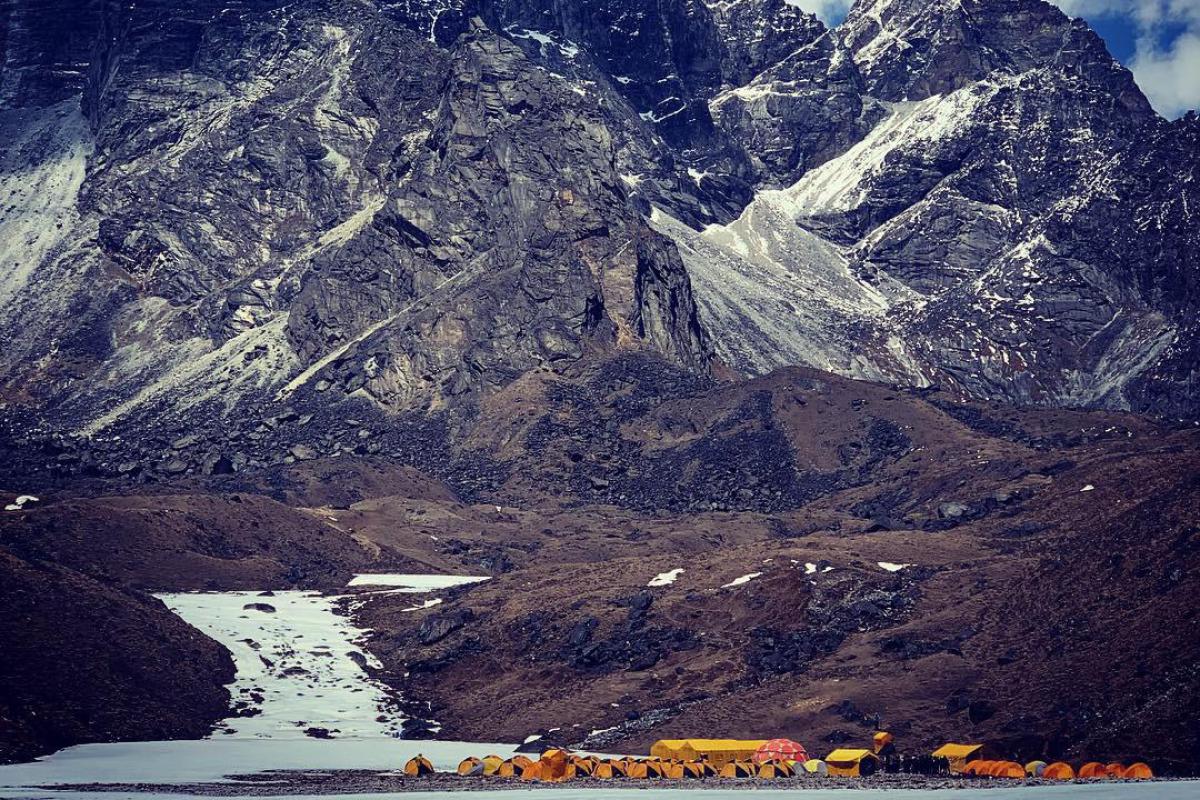
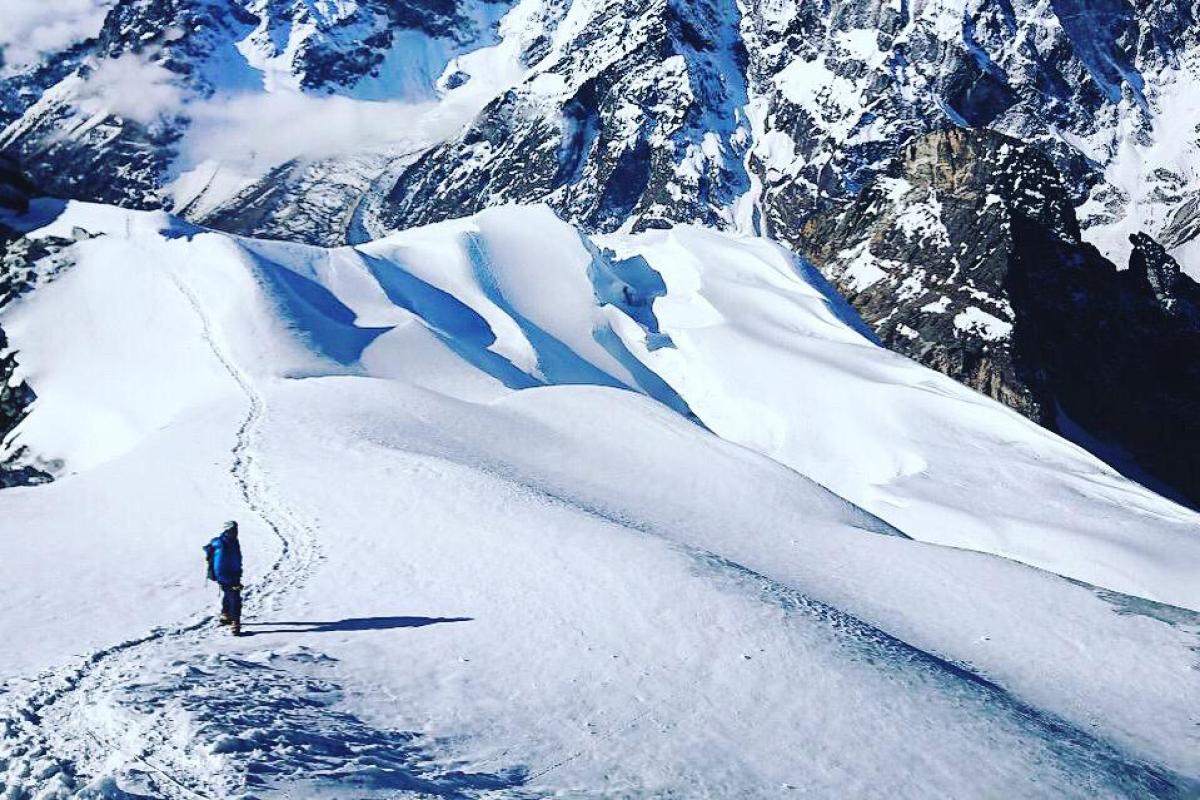
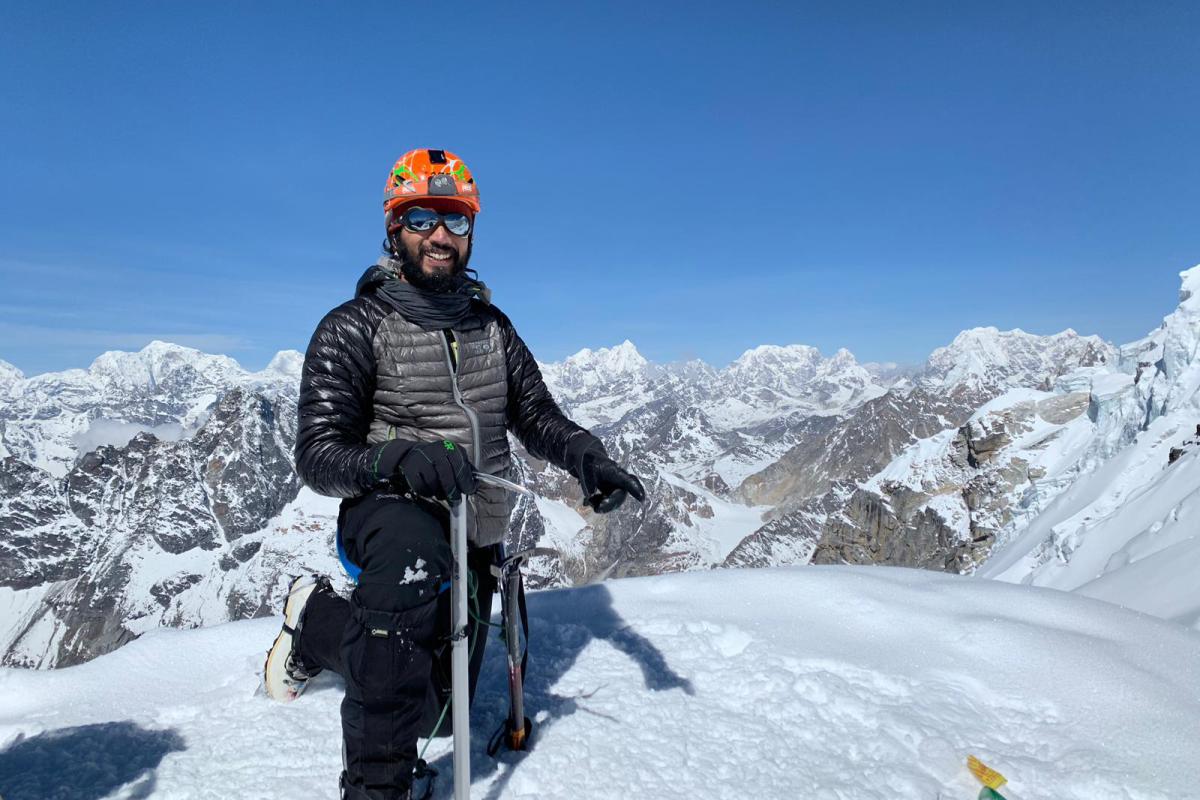
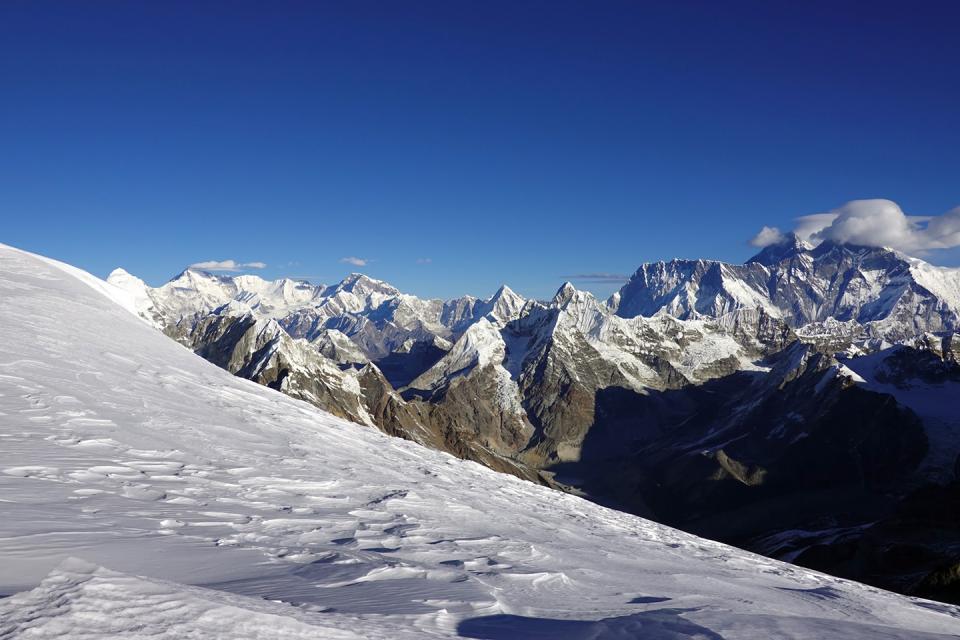
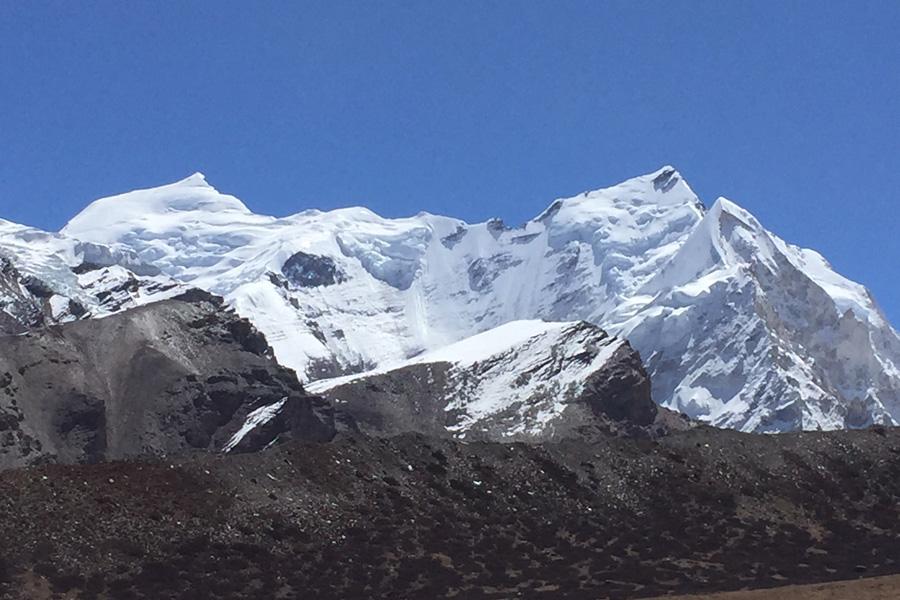

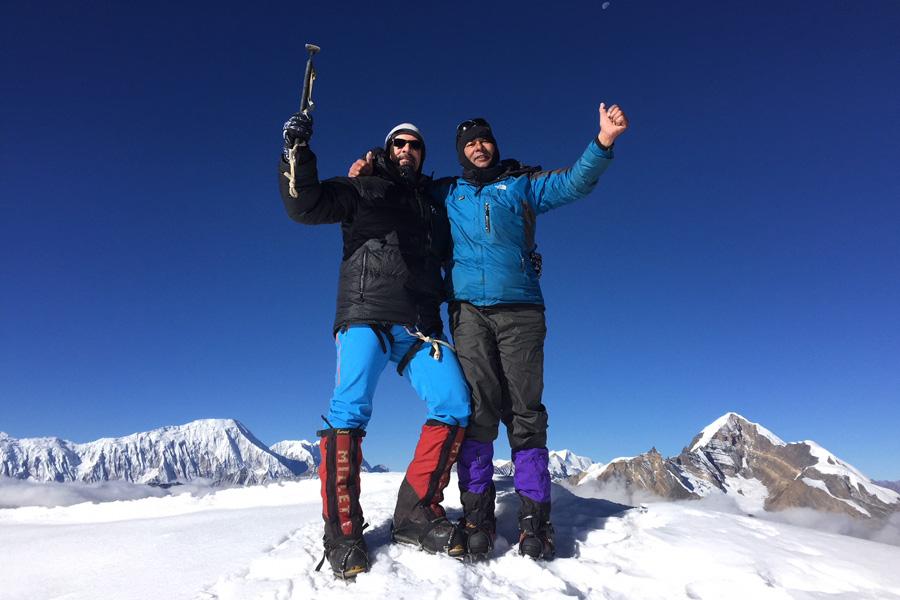
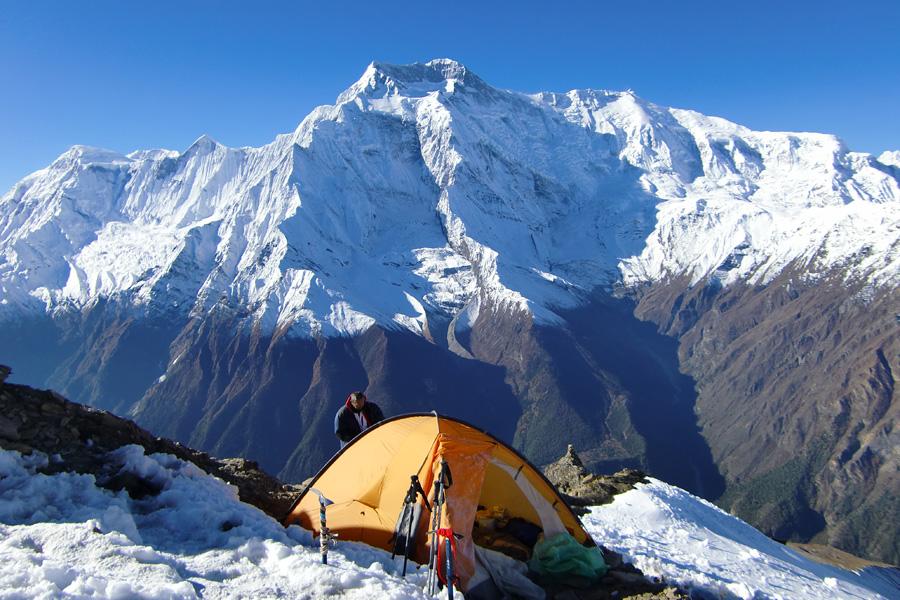
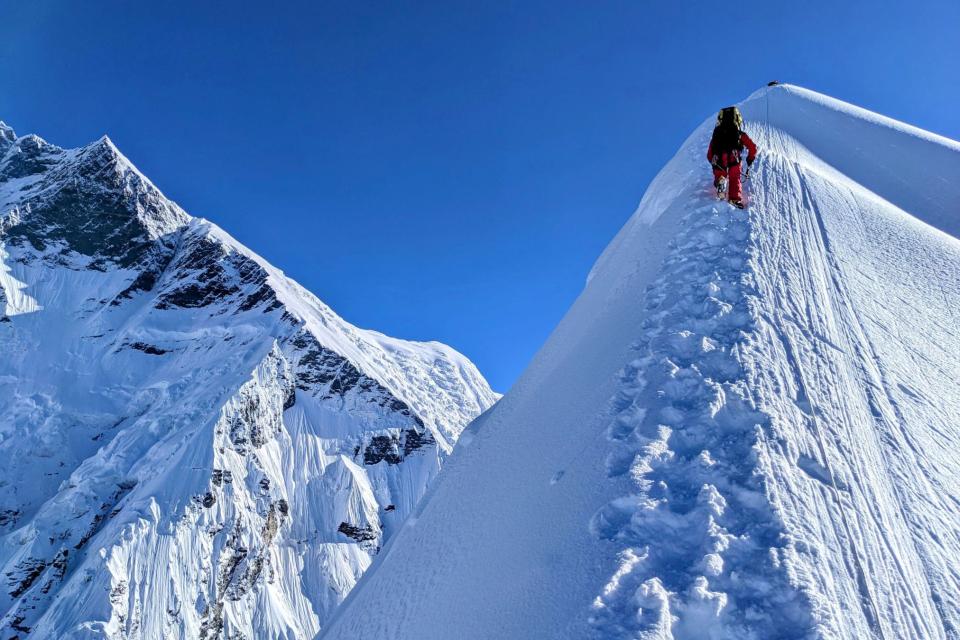
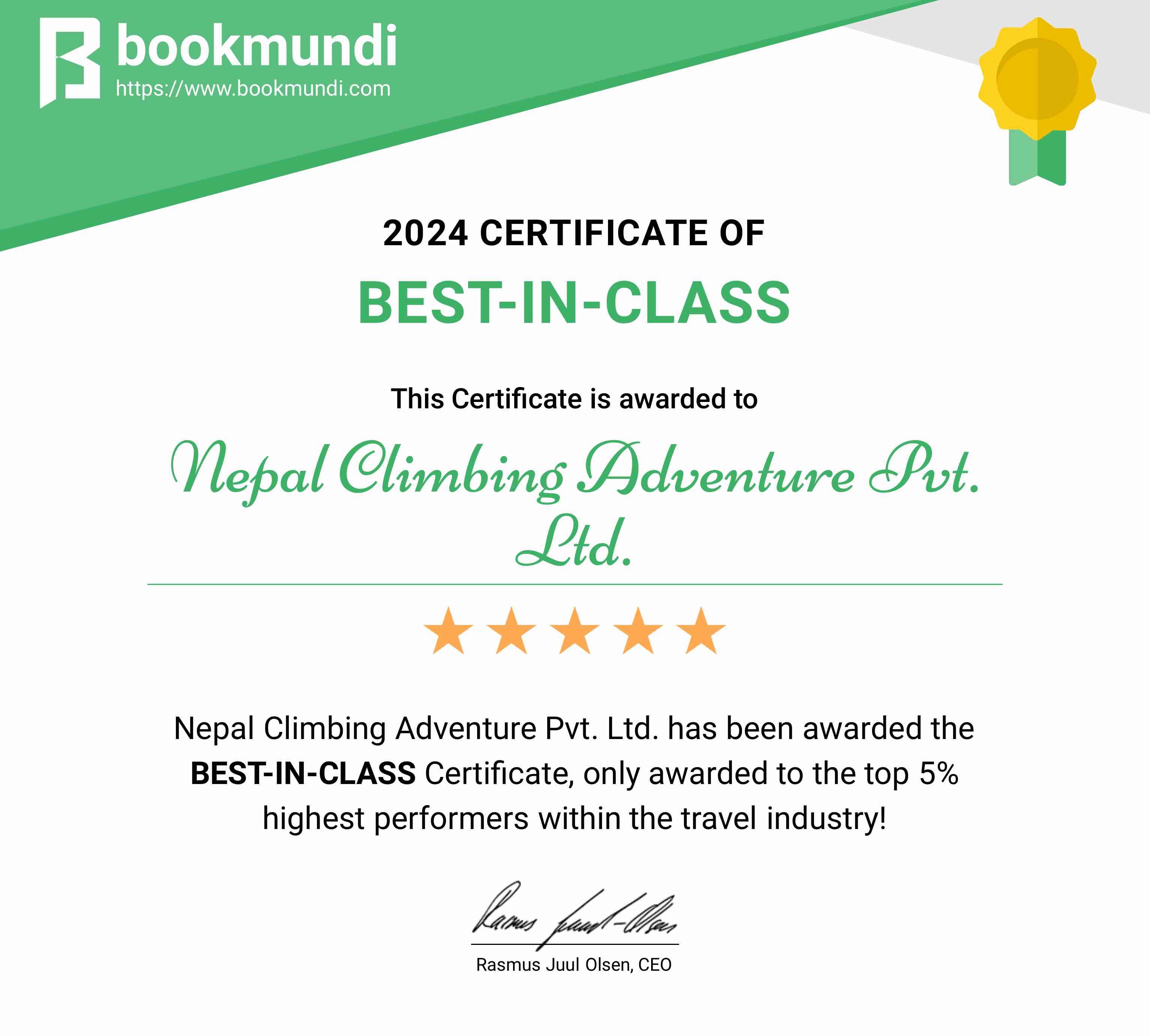

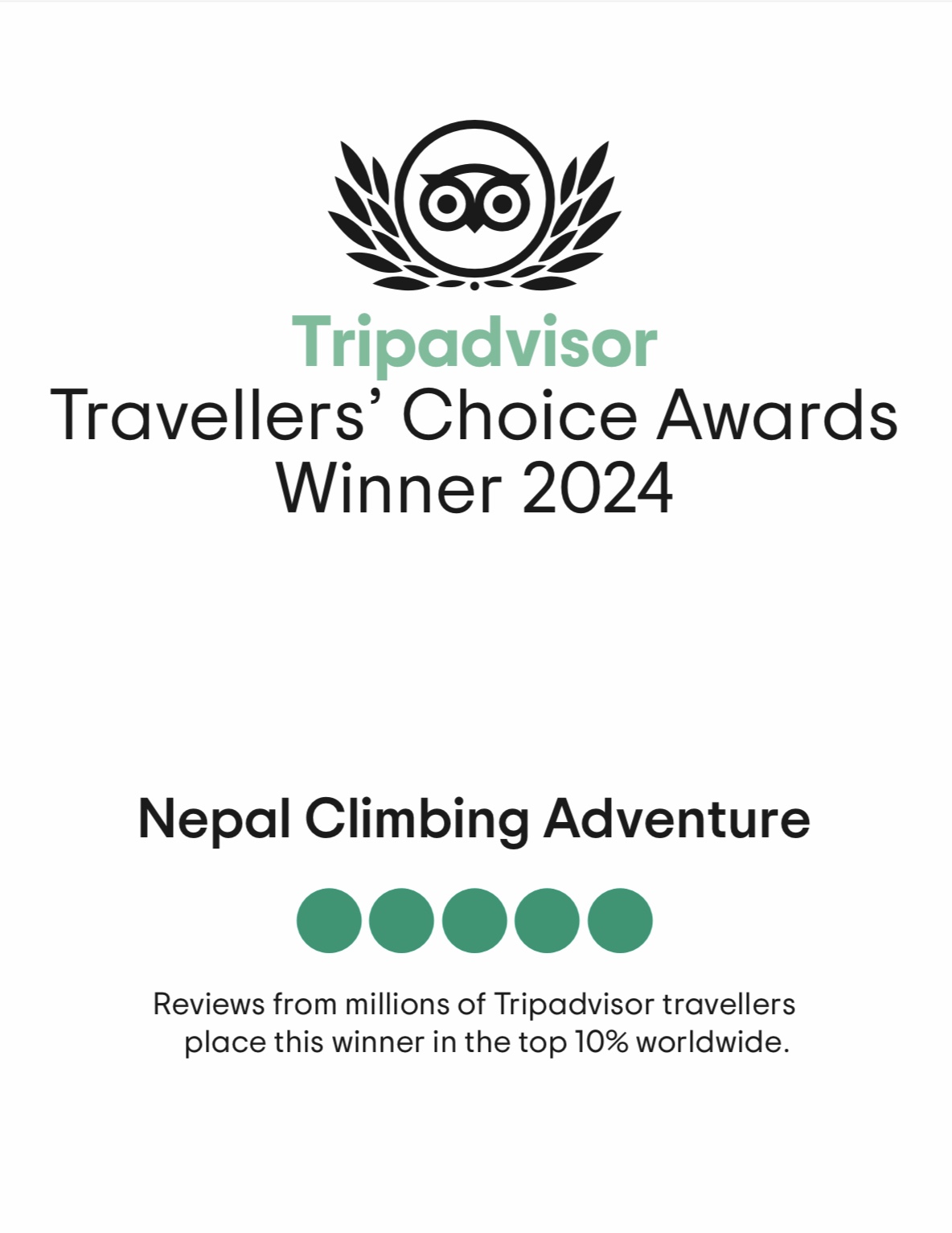
















 Chris Chhetri
Chris Chhetri